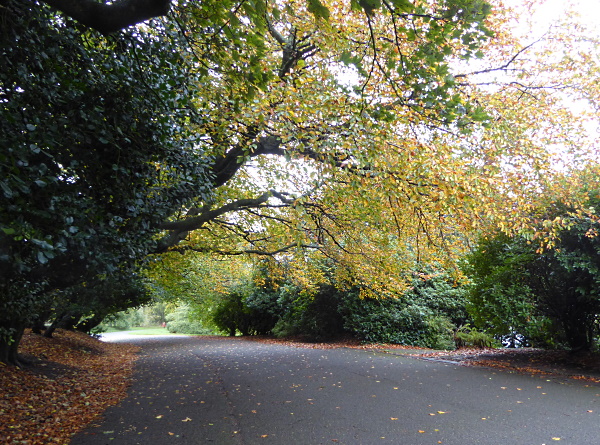
Oh heck, another wet and soaking day! It started well enough, mild and sunny at the south end of Sefton Park lake. The trees were on the turn and the usual birds were there, although not in great numbers – Mute Swans, Canada Geese, Mallards, Coots, Moorhen, Black-headed Gulls and a scattering of Little Grebes and Tufted Duck. We climbed up the bank to look at the large green Cedar that Richie the Ranger thinks is a Cedar of Lebanon and I think is more likely to be a green-form Atlas Cedar.
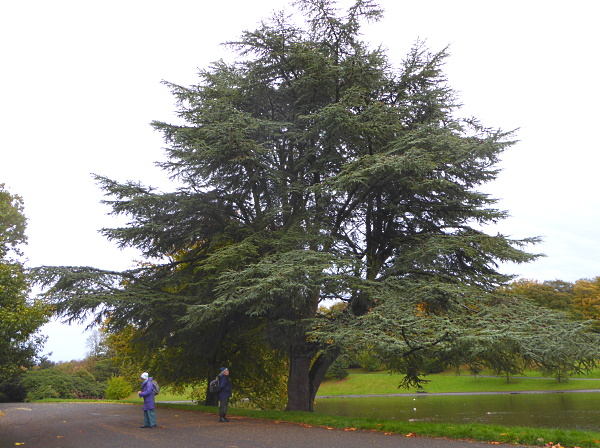
We wanted to look at the cones to see if they had a dimple in the top, which is diagnostic of an Atlas Cedar, but it is very hard to get a view of a cone from above, and they very rarely fall. The clincher were the little fallen sausages on the path beneath. I have never thought about cedars having male flowers or catkins, but that must be what they were. Mitchell says the male flowers of the Atlas Cedar are pink-yellow, 4cm and curved, while those of the Lebanon are pale grey-green, 5cm, and erect. They look like Atlas Cedar male flowers to me.
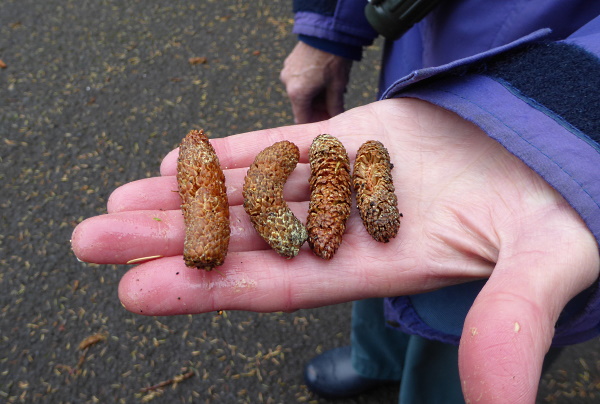
I had a list of some of the champion trees of the park, several well-known to us already, but none have photos on the TROBI database. The plan was to “bag” some. The first was the girth champion Narrow-leaved Ash ‘Raywood’ Fraxinus angustifolia with its lovely gold-and-purple autumn foliage.

Then the Hybrid weeping willow Salix x sepulcralis ‘Salamonii’ which is has strikingly orangey-brown bare twigs in mid winter, but still beautiful in its autumn leaves.
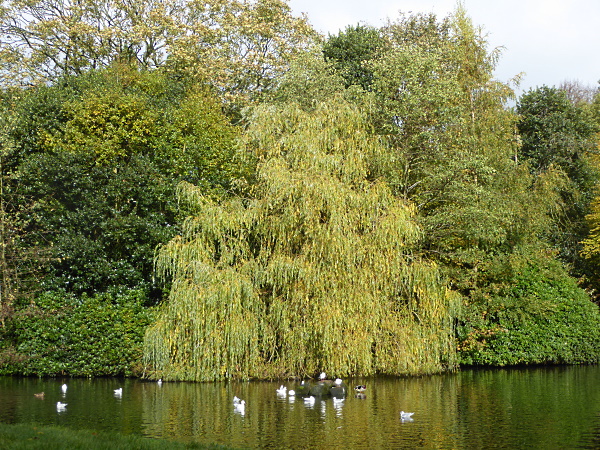
Then the Lancashire girth and height champion Black Walnut Juglans nigra opposite the bandstand.
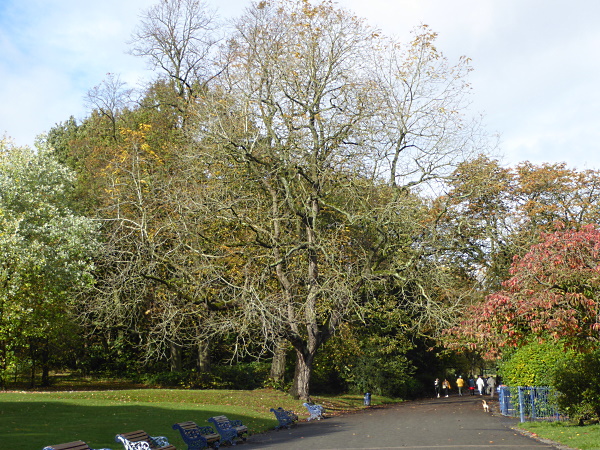
Listed as “remarkable” is this Cut-leaved Beech Fagus sylvatica ‘Asplenifolia’ on the bandstand island and sweeping down to the water.
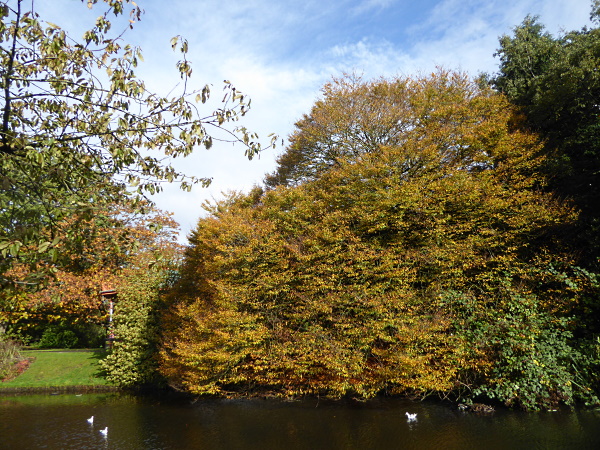
We could hear the Ring-necked Parakeets screeching and occasionally glimpsed them in flight. On one of the corners near the Oasis café was a very red-leaved tree with an amazing mixture of fallen leaves on the ground beneath. Could they all be from one tree? Some kind of oak? We rootled around in the shrubbery beneath it but could only find one trunk bearing those bright red leaves. There were no acorns, either, to identify the species. I think it must have been a Red Oak. Mitchell says “leaf very variable in size and lobing”, so that must be it.
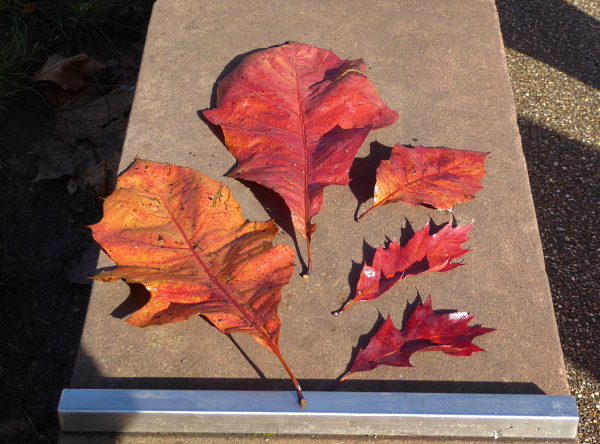
After lunch we headed north looking for another rare tree which I have never seen before. The Golden Ash Fraxinus excelsior ‘Jaspidea’ is a variety of the normal Ash, and looks the same for most of the year, but in autumn it turns a uniform yellow all over. The listing said “west side of stream in west valley, above upper bridge”, so we walked north from the café, keeping to the left of the stream. This is Kingfisher territory, and to our delight, one flashed past us but was soon lost in the reeds. And there was the Golden Ash, leaning over the path, its yellow leaves contrasting nicely with the dark Scots Pines planted near it.

On the way back we looked over the big field towards the obelisk, and were amazed to see a circle of birds all scattered around a fellow sitting on the ground. They were Gulls and Crows, all sitting still and calm and many were looking away from the man in the middle. Was he feeding them, was he talking to them, a bird whisperer? It was very strange.
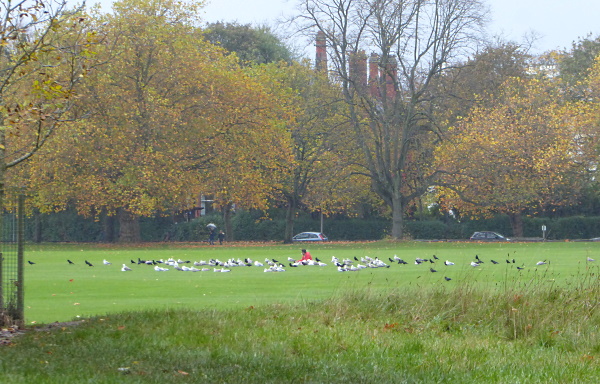
Then the heavens opened and it was a long wet walk back to Aigburth Vale for the bus.
Public transport details: Bus 82 from Elliot Street at 9.55, arriving Aigburth Road / Ashbourne road at 10.15. Returned on the 60 bus from Aigburth Vale at 2.35.
